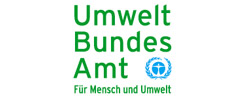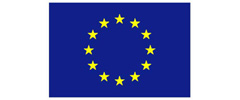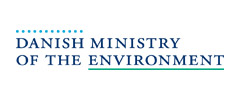SIN List update by ChemSec includes new tool for sustainable substitution
The SIN list, highlighting chemicals of high concern since 2008, includes additional 28 chemicals for priority action and launches online tool for sustainable substitution for businesses
08.10.2014 |

Anne-Sofie Andersson, Director of ChemSec, opening the SINnovation conference in Brussels. Copyright: @ChemSec
Finding ways to enable chemical substitution to spur on sustainable innovation was discussed in Brussels at a conference entitled “SINnovation – keys for the future”.
The update of the SIN List adds 28 substances to the list. Many of these are chemicals that have been used to replace better known hazardous substances, but are in fact just as problematic. For example, the hormone-disrupting chemicals Bisphenol F and Bisphenol S have now been included on the SIN List. These substances have been frequently used to replace one of the most commonly used chemicals globally, Bisphenol A. Modified versions of already regulated brominated flame retardants and fluorinated chemicals have also been added.
"Developing products without harmful chemicals is about producing for the future. This is the direction EU chemicals regulation REACH as well as industry front-runners are taking. Today’s SIN List update focuses on sustainable innovation, on developing products that are truly safer in the long run", says ChemSec director Anne-Sofie Andersson.
To give a better overview of the chemicals, the SIN List has now also been divided 31 groups based on structure and toxic properties. Examples of these groups are bisphenols, phthalates and perfluorinated compounds.
The grouping has also served as the base for a new tool – SINimilarity. This online tool makes it possible to search among 80,000 chemicals and find out if they are similar to any of the chemicals on the SIN List.
ChemSec – the organisation behind the SIN List is a non-profit organisation working to substantially reduce the use of hazardous chemicals and its impact on health and the environment. We speed up legislative processes, encourage companies and financial investors to move away from hazardous chemicals and act as a catalyst for progressive dialogue and action. ChemSec was founded in 2002 by environmental organisations and is funded by grants from authorities and foundations.
HEAL, the Health and Environment Alliance of which WECF is also a member, welcomes developments related to the SIN List as an important move to encourage companies to produce products that do not contain harmful chemicals, such as endocrine disrupting chemicals (EDCs) and sent out its own press release: “SIN List” advance will contribute to reducing chronic disease
The SIN List is developed by ChemSec in cooperation with other leading environmental, health, women and consumer organisations mainly in Europe but also in the US: The European Consumer Organisation (BEUC), Center for International Environmental Law (CIEL), CHEM Trust, Clean Production Action (CPA), ClientEarth, European Trade Union Confederation (ETUC), European Environmental Bureau (EEB), Friends of the Earth Europe, Greenpeace European Unit, Health and Environment Alliance (HEAL) and Women in Europe for a Common Future (WECF).
Both the SIN List and SINimilarity are free-of-charge online tools available at sinlist.chemsec.org.
Related News
WECF co-organising partner Green Pharmacy Conference 2017
The environmental cycle of medicines - an incentive for innovation in the human and veterinary medicine chain
21.09.2017
Recycling contaminates plastic children’s toys with toxic chemicals from electronic waste
A new global survey finds that recycling plastics containing toxic flame retardant chemicals found in electronic waste results in contamination of the world’s best-selling toy: The Rubik’s Cube.
20.04.2017
One step towards a safer blood bag
WECF speaker at final Seminar of the LIFE+ project PVC Free Blood Bag, 27-28 September, in Östersund, Sweden
11.10.2016
WECF sends letter to Dutch Secretary of State concerning EU policy on EDCs
In a joint statement WECF and the EDC Free Coalition ask Dutch State Secretary Dijksma to insist on major changes at the Environmental Council meeting to protect our health and environment.
21.06.2016
Commission's EDC criteria proposal: More humans will have to be harmed before action is taken
The European Commission presented today its proposal for criteria to identify endocrine disrupting chemicals (EDCs). WECF and the EDCfree Coalition condemn strongly the decision.
15.06.2016




































